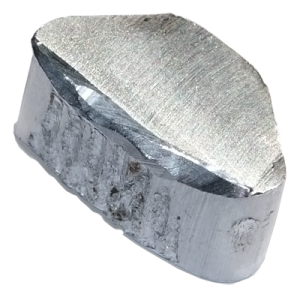“Aluminium’s sixty-year reign as the world’s most precious substance was glorious, but soon an American chemist ruined everything.” -Sam Kean, The Disappearing Spoon: And Other True Tales of Madness, Love, and the History of the World from the Periodic Table of the Elements.
From being a most precious substance to being a most widely used non-ferrous metal, Aluminium came a long way in it short history of over 100 years. In 2017, Global production of primary aluminium stood at 63.4 million tonnes and consumption stood at about 64 million tonnes with application ranging from construction to transportation. This remarkable transformation can be attributed to Aluminium’s unique properties. But unlocking this metal wasn’t straightforward. Advent of electricity and improvement of chemistry in 19th century helped in discovering Aluminium. Even after its discovery, lack of a commercially viable method made Aluminium expensive than gold.
Early Ages: Age of Alum
Unlike Aluminium, Alum, its source ore, was known to humans as early as 2000 BC. Egypt imported significant quantities of Alum by 5th century BC where it was used for various purposes like tanning leather and as auxiliary agent in metal and glass finishes. Pliny the Elder’s Natural history, a book published around 77AD, contains a detailed description of a substance called Alumen. The Roman army doctor Dioscorides of first century AD recommended Alum to stop bleeding in his book De matrica medica. World got its Alum from naturally occurring deposits such as ones in Greece and Turkey. It became indispensable to European fabric industry and was imported until mid 15th century. Later discovery of Alunite, a potassium aluminium sulphate rock, at Tolfa around 1460s led to a Papal monopoly of alum in Europe and provided large revenue to Rome. This monopoly continued until discovery of alum shale in north Yorkshire causing price of alum to fall drastically.
Fun fact: Alum can still be used as styptic pencil to stop bleeding even today.
Middle ages to 18th century: Elusive Aluminium
Though was widely used, Alum’s nature was unknown till 16th century. In 1595, Andreas Libavius, German doctor and chemist, demonstrated that an undiscovered earth is part of alum and named it “alumina”. Many attempts continued in later part of 18th century to establish the nature of Alumina and by end of 18th century, alumina was considered a metallic earth and correct chemical formula AL2O3 was established by German chemist Eilhard Mitscherlich in 1821. Early 19th century also saw multiple attempts to separate the metal by various chemists. Humphry Davy, a British Chemist, was a pioneer in the field of electrolysis and used the voltaic pile to split common compounds to prepare many new elements. He discovered several new metals including sodium and potassium.
Fun fact: Davy hired Michael Faraday as an assistant after a laboratory accident. Later he would joke that Michael Faraday, who became a great chemist and physicist, is his greatest discovery.
Davy couldn’t isolate Aluminium during his experiments and suggested the metal be named Alumium in 1808 and Aluminum in 1812 thus producing the modern name. While US picked up the name Aluminum, other scientists used the spelling Aluminium.
Fun fact: Spelling was changed to Aluminium as the word Aluminum was objected due to it less classical sound
19th century: Discovery of Aluminium
Danish physicist and chemist Hans Christian Ørsted was initially thought to be the first person, in 1824, to produce aluminium. It was later established that he obtained an aluminium-potassium alloy. In 1827, German chemist Friedrich Wöhler tried again and was able to produce impure Aluminium powder. Finally in 1945, Wohler could successfully produce small pieces of the metal and was credited as the discoverer of aluminium. Wöhler’s method could not yield large amounts of aluminium and the metal remained rare, its cost exceeded that of Gold.
Fun fact: US spells the metal as Aluminum while rest of world spells it as Aluminium
The 60 year reign of Aluminium as a precious metal ended after discovery of Heroult-Hall process. Aluminium went on to become a widely used Metal including being used as lightweight crankcase for the engine developed by Wright brothers for their famous first flight.
Let’s trace the journey of Aluminium commercialisation and path it took from discovery to its current point in Next post.



